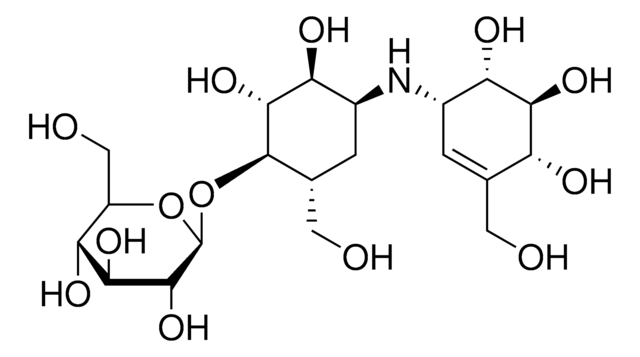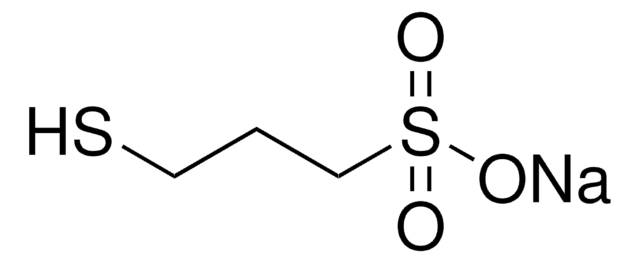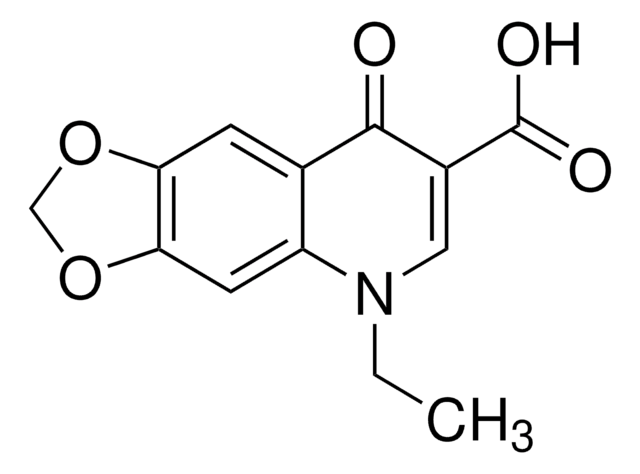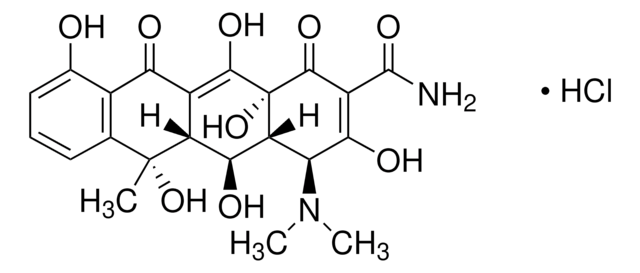K4013
Kasugamycin hydrochloride from Streptomyces kasugaensis
Sinônimo(s):
3-O-[2-Amino-4-[(carboxyiminomethyl)amino]-2,3,4,6-tetradeoxy-D-arabino-hexopyranosyl]-D-chiro-inositol
About This Item
Produtos recomendados
fonte biológica
Streptomyces kasugaensis
Nível de qualidade
Formulário
powder
cor
white to off-white
espectro de atividade do antibiótico
Gram-negative bacteria
Gram-positive bacteria
Modo de ação
protein synthesis | interferes
temperatura de armazenamento
2-8°C
cadeia de caracteres SMILES
C[C@H]1O[C@H](O[C@H]2[C@H](O)[C@@H](O)[C@@H](O)[C@H](O)[C@@H]2O)[C@@H](N)C[C@@H]1NC(C(O)=O)=N.Cl
InChI
1S/C14H25N3O9.ClH/c1-3-5(17-12(16)13(23)24)2-4(15)14(25-3)26-11-9(21)7(19)6(18)8(20)10(11)22;/h3-11,14,18-22H,2,15H2,1H3,(H2,16,17)(H,23,24);1H/t3-,4+,5+,6-,7+,8+,9-,10+,11+,14-;/m1./s1
chave InChI
ZDRBJJNXJOSCLR-NZXABURVSA-N
Procurando produtos similares? Visita Guia de comparação de produtos
Categorias relacionadas
Descrição geral
Aplicação
Ações bioquímicas/fisiológicas
Código de classe de armazenamento
11 - Combustible Solids
Classe de risco de água (WGK)
WGK 2
Ponto de fulgor (°F)
Not applicable
Ponto de fulgor (°C)
Not applicable
Equipamento de proteção individual
Eyeshields, Gloves, type N95 (US)
Escolha uma das versões mais recentes:
Já possui este produto?
Encontre a documentação dos produtos que você adquiriu recentemente na biblioteca de documentos.
Nossa equipe de cientistas tem experiência em todas as áreas de pesquisa, incluindo Life Sciences, ciência de materiais, síntese química, cromatografia, química analítica e muitas outras.
Entre em contato com a assistência técnica







